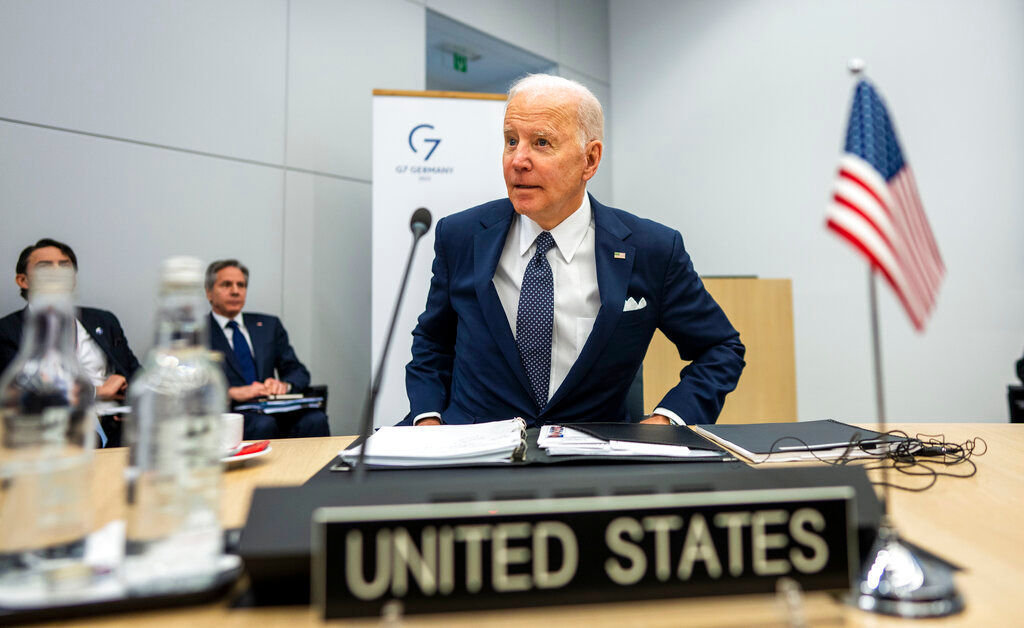US President Joe Biden on Monday announced a budget blueprint that calls for higher taxes on the wealthy, lower federal deficits, more money for police and greater funding for education, public health and housing.
Appearing at the White House with his budget director Shalanda Young, Biden said the proposal sends a clear message to the public about “what we value.” He outlined a focus on fiscal responsibility, safety and security and investments to “build a better America.”
Also read: White House scrambles to cover up Biden’s ‘butcher’ remark on Putin
The document essentially tries to tell voters what a diverse and at times fractured Democratic Party stands for ahead of the midterm elections that could decide whether Congress remains under the party’s control.
According to news agency The Associated Press, Biden is proposing a total of $5.8 trillion in federal spending in fiscal 2023, which begins in October, slightly less than what was projected to be spent this year before the supplemental spending bill was signed into law this month. The deficit would be $1.15 trillion.
There would be $795 billion for defense, $915 billion for domestic programs, and the remaining balance would go to mandatory spending such as Social Security, Medicare, Medicaid and net interest on the national debt.
Also read: Joe Biden’s budget blue print: $795 billion for defense, $915 billion for domestic programs
The higher taxes outlined on Monday would raise $361 billion in revenue over 10 years and apply to the top 0.01% of households. The proposal lists another $1.4 trillion in revenue raised over the next decade through other tax increases that are meant to preserve Biden’s pledge to not hike taxes on people earning less than $400,000.
The 156-page plan also shows the splinters that persist in Biden’s coalition and the possible gaps between the promises of what is being offered and the realities of what ultimately emerges. Biden has backed many of these ideas previously without necessarily getting a full buy-in from Congress.
Also read: US President Joe Biden’s butcher remark on Russia’s Vladimir Putin ‘alarming’: Kremlin
The proposal includes a minimum 20% tax on the incomes of households worth $100 million or more, similar to an earlier proposal Democrats in Congress began debating late last year in order to pay for Biden’s domestic spending plans. But those spending plans were put on hold after talks with West Virginia Sen. Joe Manchin collapsed.
More money would go to support law enforcement, yet bipartisan efforts at police reform have failed. The budget assumes — with a high degree of uncertainty based on forecasts made last November — that inflation at a 40-year peak gets back to normal next year.
Also read: Troy Kotsur’s speech at Oscars 2022 moves hearts, internet calls it ‘most memorable’
In a statement, Biden said, “Budgets are statements of values and the budget I am releasing today sends a clear message that we value fiscal responsibility, safety and security at home and around the world, and the investments needed to continue our equitable growth and build a better America.”
It’s a midterm elections pitch to a nation still off balance from a chaotic few years caused by the pandemic, an economic recession, a recovery, challenges to US democracy, and war in Ukraine.
The Biden budget foresees cutting annual deficits by more than $1 trillion over the next decade. Those reductions would occur in large part through higher taxes and the expiration of relief spending tied to the coronavirus outbreak that began in 2020.
Also read: ‘No’: US President Joe Biden denies calling for a regime change in Russia
But like most presidential budgets, it’s a proposal and a set of ideals rather than the law of the land. Congress is responsible for implementing the budget through tax and spending legislation and annual agency funding.
The proposal faced immediate criticism from Republican lawmakers. They noted that deficits well in excess of $1 trillion annually would persist, said higher taxes could hurt growth and objected that additional government spending would feed into inflation.







